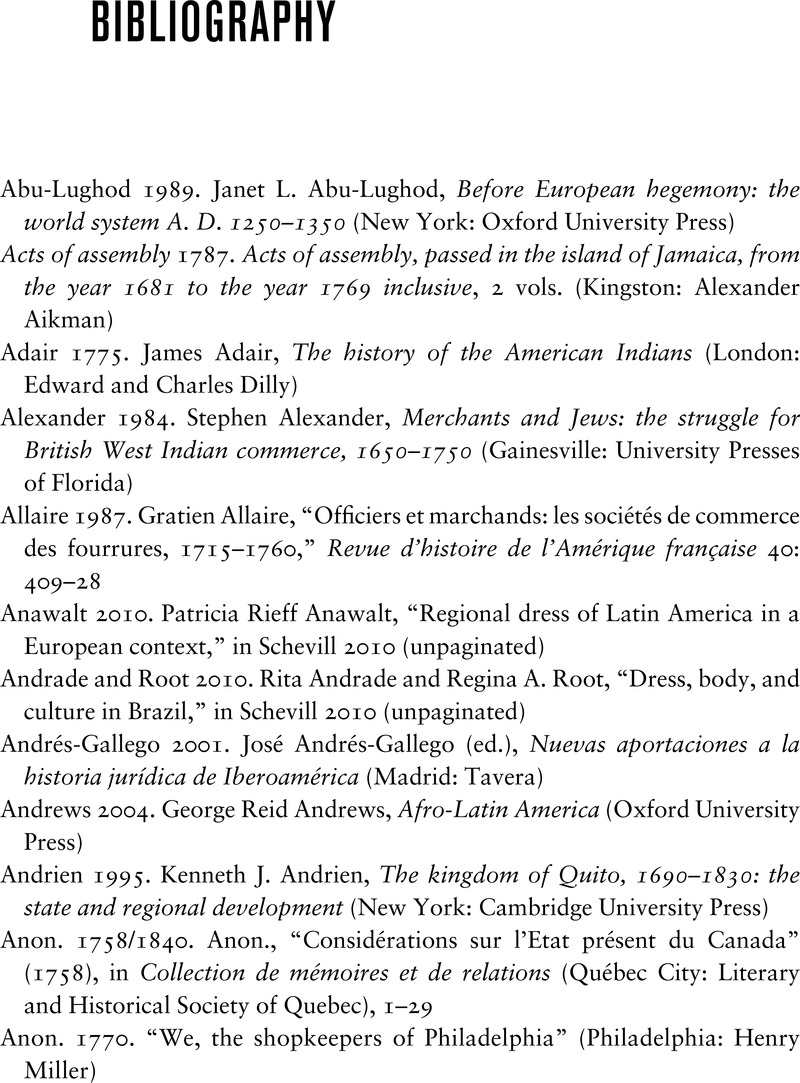Book contents
- Frontmatter
- Contents
- List of plates
- List of figures
- List of maps
- List of tables
- Acknowledgements
- List of abbreviations
- Maps
- Introduction: Fashioning the Atlantic world
- 1 Dress regimes at the dawn of the shared Atlantic
- 2 Acquiring imported textiles and dress
- 3 Redressing the indigenous Americas
- 4 Dress under constraint
- 5 Dressing free settlers in the “torrid zone”
- 6 Free settler dress in temperate zones
- 7 Atlantic dress regimes: fashions and meanings, implications and ironies
- Appendix 1: Sources for Tables 2.1, 2.2, 2.3
- Appendix 2: Inventory sources for free settler garment holdings
- Notes
- Bibliography
- Index
- Plate section
- References
Bibliography
Published online by Cambridge University Press: 05 October 2015
- Frontmatter
- Contents
- List of plates
- List of figures
- List of maps
- List of tables
- Acknowledgements
- List of abbreviations
- Maps
- Introduction: Fashioning the Atlantic world
- 1 Dress regimes at the dawn of the shared Atlantic
- 2 Acquiring imported textiles and dress
- 3 Redressing the indigenous Americas
- 4 Dress under constraint
- 5 Dressing free settlers in the “torrid zone”
- 6 Free settler dress in temperate zones
- 7 Atlantic dress regimes: fashions and meanings, implications and ironies
- Appendix 1: Sources for Tables 2.1, 2.2, 2.3
- Appendix 2: Inventory sources for free settler garment holdings
- Notes
- Bibliography
- Index
- Plate section
- References
Summary

- Type
- Chapter
- Information
- The Material AtlanticClothing, Commerce, and Colonization in the Atlantic World, 1650–1800, pp. 293 - 331Publisher: Cambridge University PressPrint publication year: 2015



